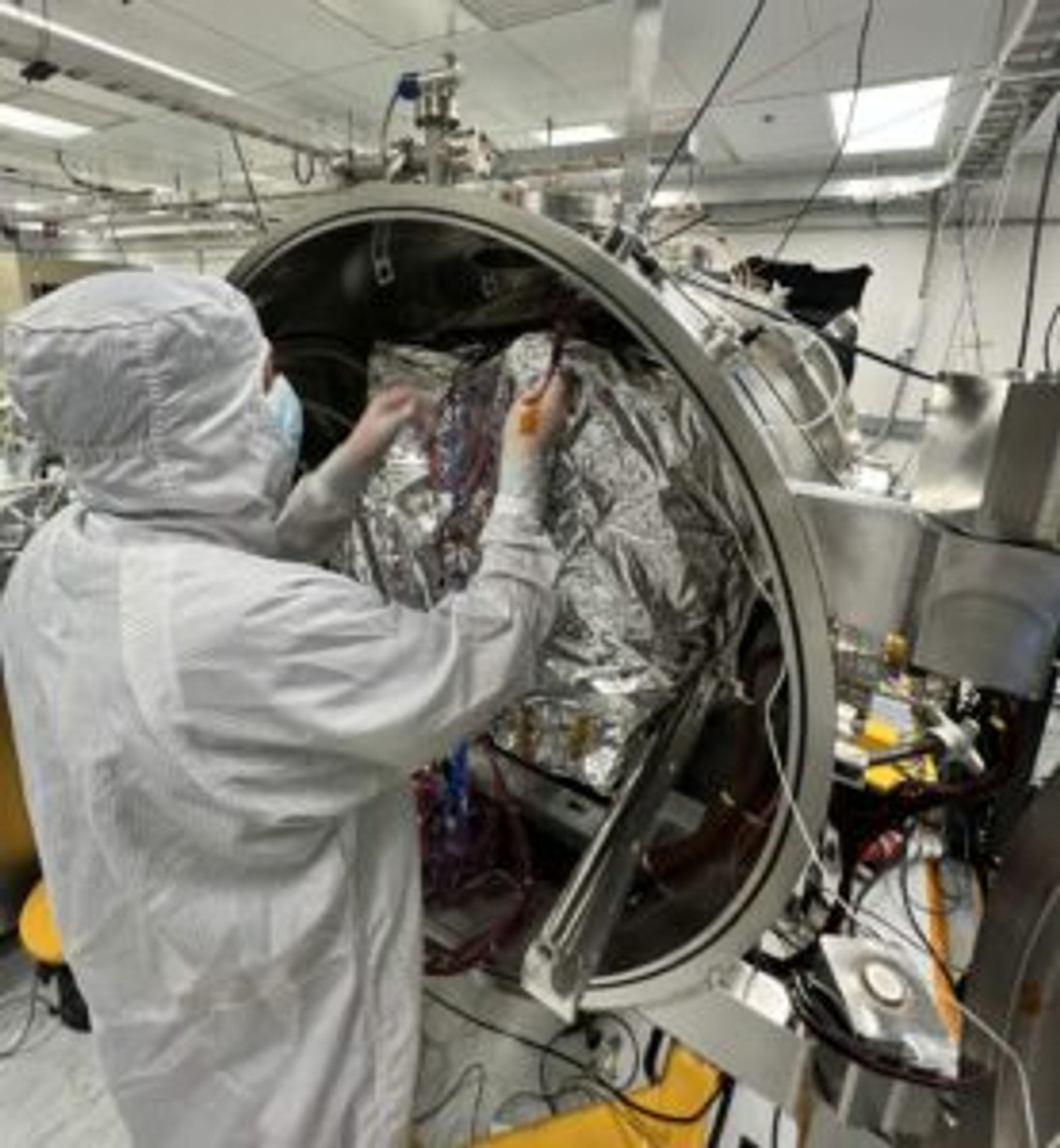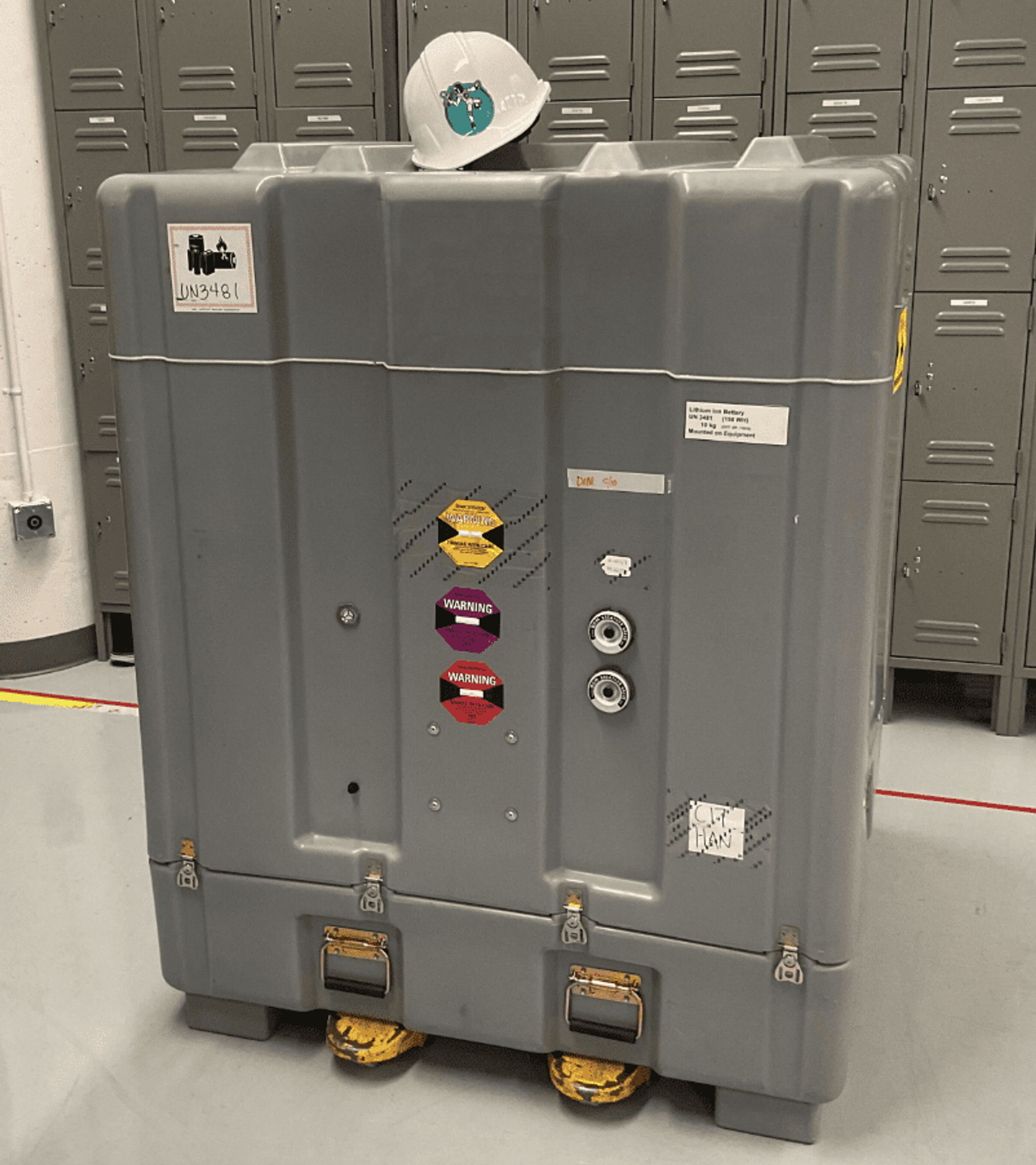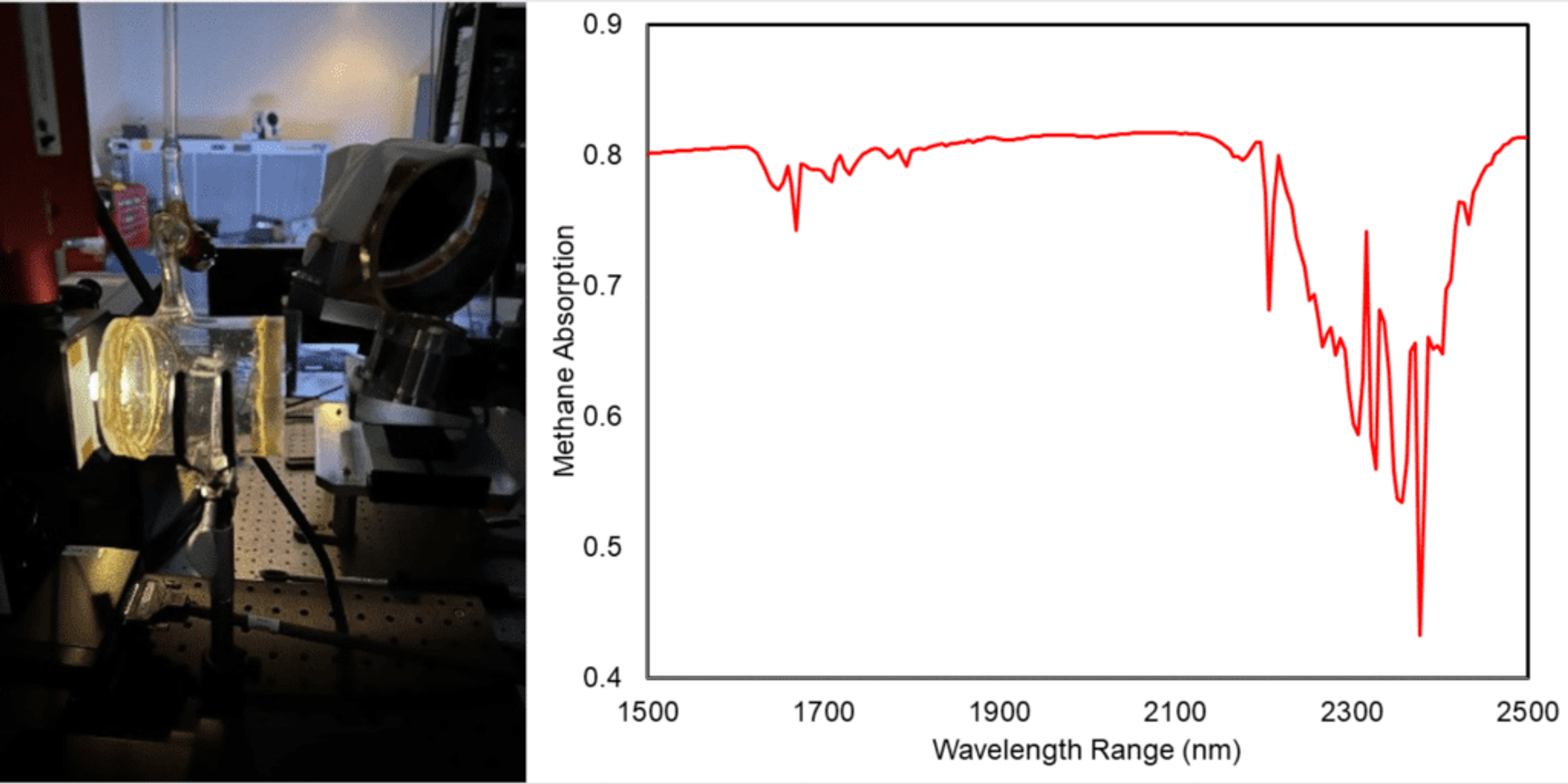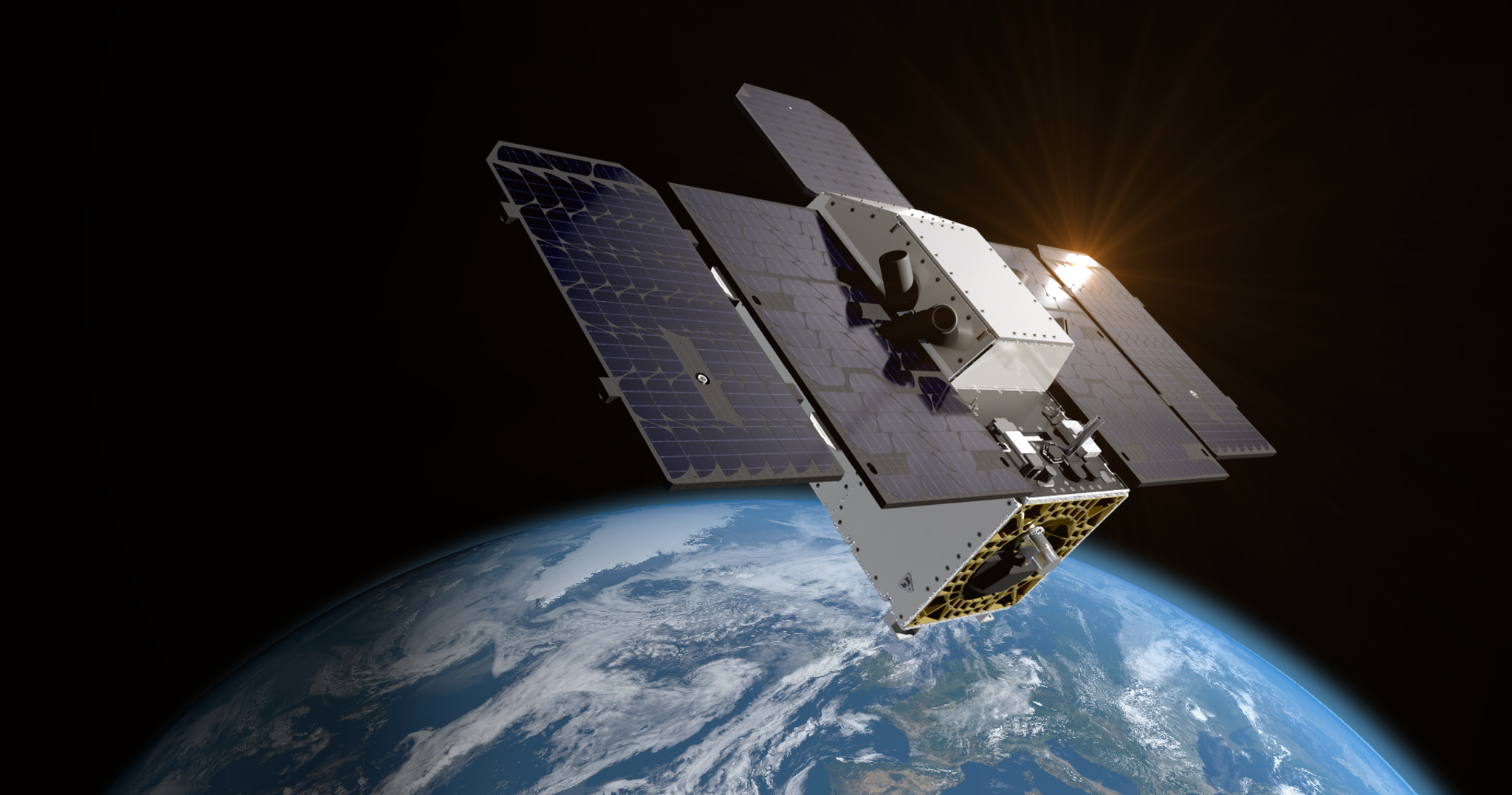NASA JPL Imaging Spectrometer Ready for Tanager 1 Integration
Today we have an exciting update to report for the Tanager program - the imaging spectrometer, developed by NASA JPL, has been handed off to our team for integration onto our Tanager 1 hyperspectral satellite. This exquisite instrument will act as the “eye” of the satellite, allowing us to detect, pinpoint, and quantify point source emissions of methane and carbon dioxide. This marks a major milestone for the Carbon Mapper Coalition, a public-private partnership announced in 2021, with the aim of gaining a deeper understanding of global methane and carbon dioxide emissions. As part of this coalition, Planet is actively building and launching two hyperspectral satellites, Tanager 1 and Tanager 2. Tanager 1 is expected to be ready for launch in 2024.
In addition to the progress being made on Tanager, we’re continuing to push our Pelican Program forward, with the first Tech Demo, TD1, now fully built and expected to be ready for launch later this year. This marks an important step for not only Pelican, but also Tanager, as the two constellations share a common body that holds each payload’s scientific instruments, known as the satellite bus. TD1’s primary mission will be to test the satellite platform and operational systems on-orbit. The learnings from TD1, a true R&D satellite, will be integrated into our upcoming Pelican and Tanager satellite builds.
As we gear up to launch Tanager 1 and 2, we are collaborating closely with users in our Early Access Program (EAP) to understand how hyperspectral data will deliver the greatest value to their organizations. This program, which leverages synthetic data developed in partnership with Rendered.ai, will allow us to generate well-rounded market feedback for our satellite program and unearth innovative applications and use cases for our future hyperspectral data.
Our EAP cohort is substantial, spanning across companies in agriculture, energy, mining, and defense, and has deepened our understanding of the market demand for hyperspectral data. The program is helping us to further refine our product development process and speed the time-to-value of our data. We are excited to continue working with our EAP partners to iterate on our designs and data pipeline to ensure a seamless integration of our upcoming hyperspectral data.
To learn more about the instrument built by NASA JPL, and some of the other major achievements we’ve made across the Carbon Mapper Coalition to date, check out the joint blog post written by Carbon Mapper and NASA JPL below.
###
Road to Launch: The Carbon Mapper Coalition achieves key satellite milestones
This week, the instrument that will go on the Tanager-1 satellite was transferred from NASA’s Jet Propulsion Laboratory (JPL) to Planet Labs PBC (Planet)! This marks an exciting milestone in the development of the first of two satellites being developed and deployed through a first-of-its-kind public-private Coalition led by Carbon Mapper, a nonprofit with the mission to provide actionable and accessible methane and CO2 data to decision makers.
An imaging spectrometer, which will measure the greenhouse gases methane and carbon dioxide, sits integrated at NASA’s Jet Propulsion Laboratory in August, before shipment to the Bay Area. The instrument will be integrated into the Tanager-1 satellite over the next several months. Image Credit: NASA/JPL-Caltech
Detecting methane from space

An engineer prepares the imaging spectrometer instrument for testing in a thermal vacuum chamber at JPL. Image Credit: NASA/JPL-Caltech
In 2021, Carbon Mapper and partners from NASA JPL, Planet, the California Air Resources Board, RMI, Arizona State University, the University of Arizona, and philanthropic partners including the High Tide Foundation, Grantham Foundation, and Bloomberg Philanthropies, among others announced plans to develop and deploy two satellites with capabilities to detect, pinpoint, and quantify high emission methane and carbon dioxide (CO2) point sources at the scale of individual facilities.
This involved assembling a unique Coalition which has brought together entities with technical, scientific, engineering, and policy expertise to accomplish bold objectives far bigger than any one company or organization could tackle on their own at the scale that’s needed to drive emissions reductions. These two satellites are designed to help fill gaps in our current understanding of methane and CO2 emissions, and are the first step toward a larger goal to build a full constellation.

Engineers prepare the imaging spectrometer instrument for vibration testing at JPL. Image Credit: NASA/JPL-Caltech
The instrument, designed and built by NASA JPL, is an imaging spectrometer that measures the hundreds of wavelengths of light reflected by Earth’s surface and absorbed by gasses in the planet’s atmosphere.
Different compounds — including greenhouse gasses like methane and CO2 — absorb different wavelengths of light, leaving a kind of spectral fingerprint not visible to the human eye. When analyzed, these light signatures can reveal which substances produced the fingerprint. The imaging spectrometer is the “eye” of the satellite and allows us to gather high quality data required to detect, pinpoint, and quantify point source emissions of methane and CO2.
A very special delivery
The instrument left JPL’s facility in Pasadena, CA, bound for the Bay Area in a truck on September 12th in preparation for the next phase on its journey to space.
“This delivery is a very exciting step for us as our team can now begin the final stage in satellite integration,” said Jeff Guido, Senior Director of New Missions at Planet. “This milestone is an excellent example of the innovative ways that government, philanthropy, and industry can play to each other’s strengths to build an exceptional capability that has the potential for global impact.”

The instrument in its crate upon arrival to the Bay Area. Image Credit: Planet Labs PBC.
Rigorous testing and first methane detection
This major milestone is not the first. Leading up to delivery, the imaging spectrometer recently passed a rigorous set of tests at JPL’s facility to ensure that the instrument can withstand the stresses of launch and harsh conditions in orbit. Engineers subjected the spectrometer to intense vibrations similar to what it will endure aboard a rocket blasting into orbit, as well as the extreme temperatures and vacuum of space.
During laboratory calibration of the instrument, a rare opportunity presented itself to test a sample of methane in front of the spectrometer. This special test was a complete success, with the instrument producing a clear spectral fingerprint of methane. “We are thrilled to see the exceptional quality of the methane spectral signature recorded — this bodes well for the space measurement soon to follow,” said Robert Green, the JPL instrument scientist.

This spectral “fingerprint” of methane was produced from data taken during a test of the imaging spectrometer at JPL. The state-of-the-art instrument measures hundreds of wavelengths of light reflected by Earth’s surface and absorbed by gasses in the atmosphere. Image Credit: NASA/JPL-Caltech
What’s next on our road to launch
The second instrument is currently being built by Planet in close collaboration with NASA JPL. This partnership is at the heart of our unique Coalition which helped to transfer the instrument’s technology from NASA JPL to Planet, and allow for the potential to develop a full satellite constellation. The two teams will continue working side-by-side as Planet leads on building the second satellite and instrument.
While these milestones are an exciting step on our journey to develop and deploy the first two Carbon Mapper Coalition satellites, we now turn efforts toward integrating the instrument with the satellite bus this fall and preparing for launch, targeting early 2024.
###
Forward-looking Statements
Except for the historical information contained herein, the matters set forth in this blog post (including statements related to the Company in the third party blog post reproduced below) are forward-looking statements within the meaning of the "safe harbor" provisions of the Private Securities Litigation Reform Act of 1995, including, but not limited to, the Company’s ability to successfully design, build, launch and deploy, operate and market new products and satellites and the Company’s ability to realize any of the potential benefits from product and satellite launches, either as designed, within the expected time frame, in a cost-effective manner, or at all. Forward-looking statements are based on the Company’s management’s beliefs, as well as assumptions made by, and information currently available to them. Because such statements are based on expectations as to future events and results and are not statements of fact, actual results may differ materially from those projected. Factors which may cause actual results to differ materially from current expectations include, but are not limited to: the Company’s ability to obtain and maintain required licenses and approvals from regulatory agencies, such as the Federal Communications Commission (FCC), in a timely fashion, or at all; whether the Company will be able to successfully build, launch and deploy or operate its satellites, including new satellites either as designed, in a timely fashion or at all; the Company’s ability to develop and release product and service enhancements to respond to rapid technological change, or to develop new designs and technologies for its satellites, in a timely and cost-effective manner; whether the Company will be able to continue to invest in scaling its sales organization, expanding its software engineering (including its ability to integrate new satellite capabilities) and marketing capabilities; whether the Company will be able to accurately predict and capture market opportunity; whether current customers or prospective customers adopt the Company’s platform or new products; the Company’s ability realize any of the potential benefits from new products and satellites, as well as strategic partnerships and customer collaborations; and the risk factors and other disclosures about the Company and its business included in the Company's periodic reports, proxy statements, and other disclosure materials filed from time to time with the Securities and Exchange Commission (SEC) which are available online at www.sec.gov, and on the Company's website at www.planet.com. All forward-looking statements reflect the Company’s beliefs and assumptions only as of the date such statements are made. The Company undertakes no obligation to update forward-looking statements to reflect future events or circumstances.
##

Ready to Get Started
Connect with a member of our Sales team. We'll help you find the right products and pricing for your needs


